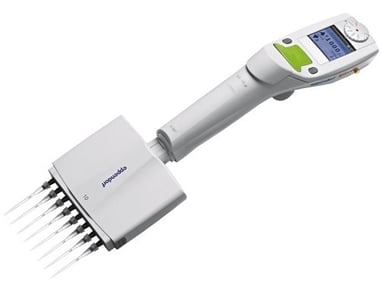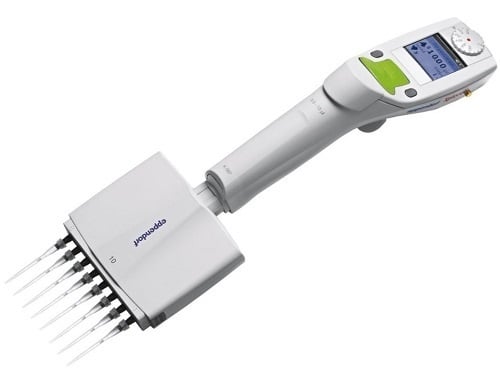Have you ever thought of getting an electronic multichannel pipette for your lab? In the past, many scientists have been put off by steeper price tags associated with electronic pipettes, and have questioned the durability of electronic vs. manual pipettes, but advances in pipetting technology over the last several years have made electronic pipettes more affordable and reliable than ever.
Multiple Pipetting Modes
One of the greatest advantages of electronic multichannel pipettes is their versatility in the lab. Almost all electronic pipettes have multiple pipetting modes, such as mixing, repeat and sequential dispensing, titration, and dilution, which makes them multi-functional and great for a variety of applications. A good electronic pipette can save you from buying multiple single-purpose instruments (like repeaters or plate washers) or having to hire an army of interns to do several different tasks with a manual pipette.

Customizable Programming
Most electronic multichannel pipettes are programmable, allowing you to fully customize and save your exact workflow into the pipette’s memory, giving you easy access to all your protocols when you need to work quickly.
Adjustable Spacing
Some manufacturers make multichannel pipettes with adjustable spacing between the channels, which makes it much easier to transfer liquid to and from microtubes, 96-well plates, and other containers, allowing for quicker sample transfer and increased efficiency.
Ergonomic Benefits
The push-button operation of electronic pipettes makes them extremely ergonomic, which is important for preventing repetitive strain injury (RSI) due to continuous daily pipetting. Traditional manual multichannel pipettes require much more force to operate the plunger, which increases with the number of channels the pipette has and the volume being handled. Using an electronic multichannel can minimize your risk of injury in the future, and can also make pipetting easier for scientists with pre-existing conditions.
Standardized Results
Multichannel pipetting technique can differ from one scientist to another, which can lead to varying results due to human error. This variation can be significant, especially in quantitative assays. Electronic multichannel pipettes provide greater precision and reproducibility than manual pipettes, giving you the consistent results that you need.



